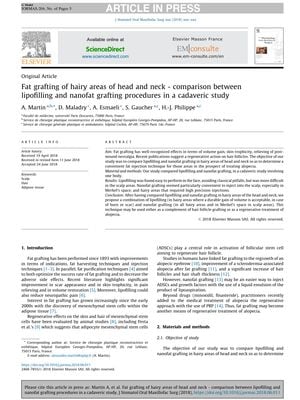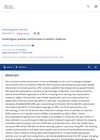Fat Grafting of Hairy Areas of Head and Neck: Comparison Between Lipofilling and Nanofat Grafting Procedures in a Cadaveric Study
June 2018
in “
Journal of Stomatology, Oral and Maxillofacial Surgery
”

TLDR Nanofat grafting is better for delicate areas and combining it with lipofilling might improve hair loss treatment.
The study compared lipofilling and nanofat grafting techniques for fat grafting in hairy areas of the head and neck, specifically for treating alopecia. Conducted on a single 70-year-old Caucasian male cadaver with type IV androgenetic alopecia, the study found that lipofilling is suitable for areas where volume increase is desired, like cheeks and chin, but more challenging in the scalp and neck. Nanofat grafting was easier to inject, less likely to cause over-injection, and allowed for higher volumes without excessive pressure, making it preferable for areas where excess volume is undesirable, such as lips, eyebrows, and neck. The study concluded that combining lipofilling and nanofat grafting could be beneficial, with lipofilling for volume and nanofat grafting for all hairy areas, particularly Merkel's space in the scalp. This approach could complement hair follicle grafting or act as a regenerative treatment for alopecia. However, the study's cadaveric nature limits its findings, and clinical studies are needed to assess the risk of complications and the effectiveness of fat grafting for alopecia treatment in living subjects.





